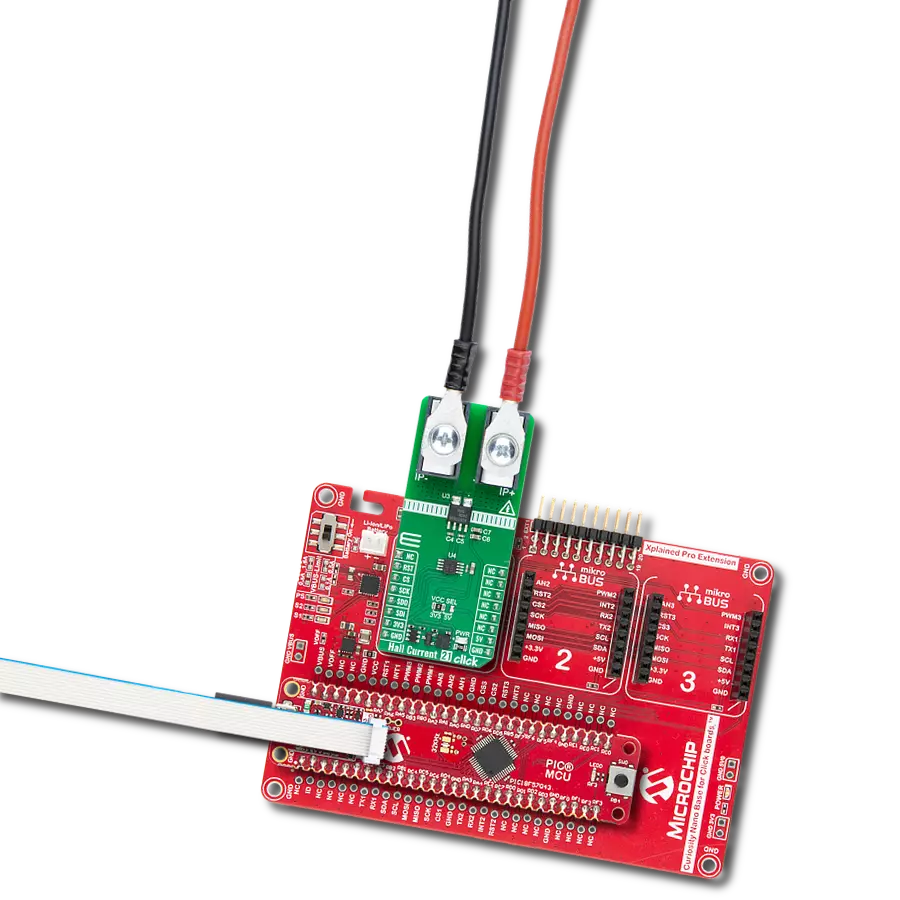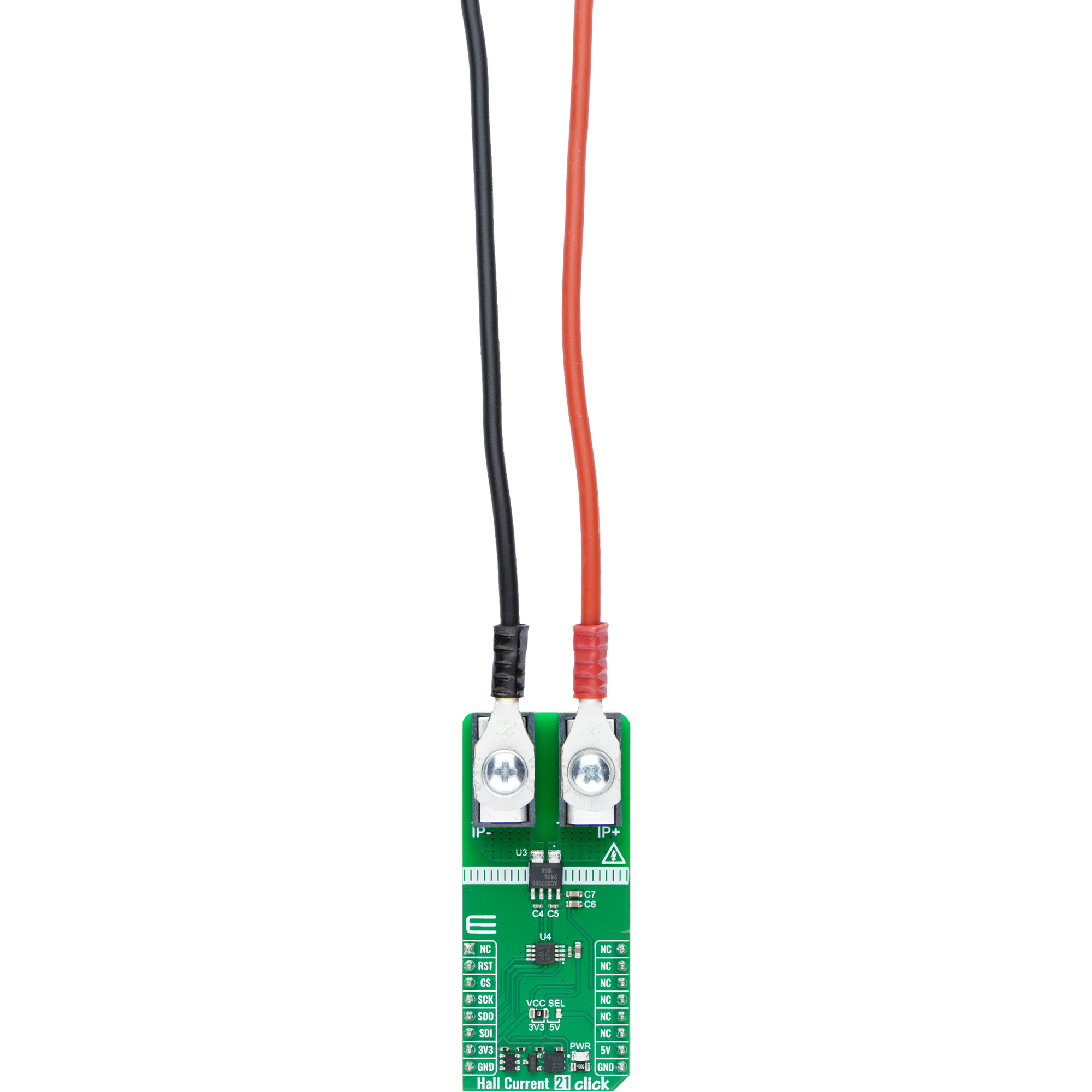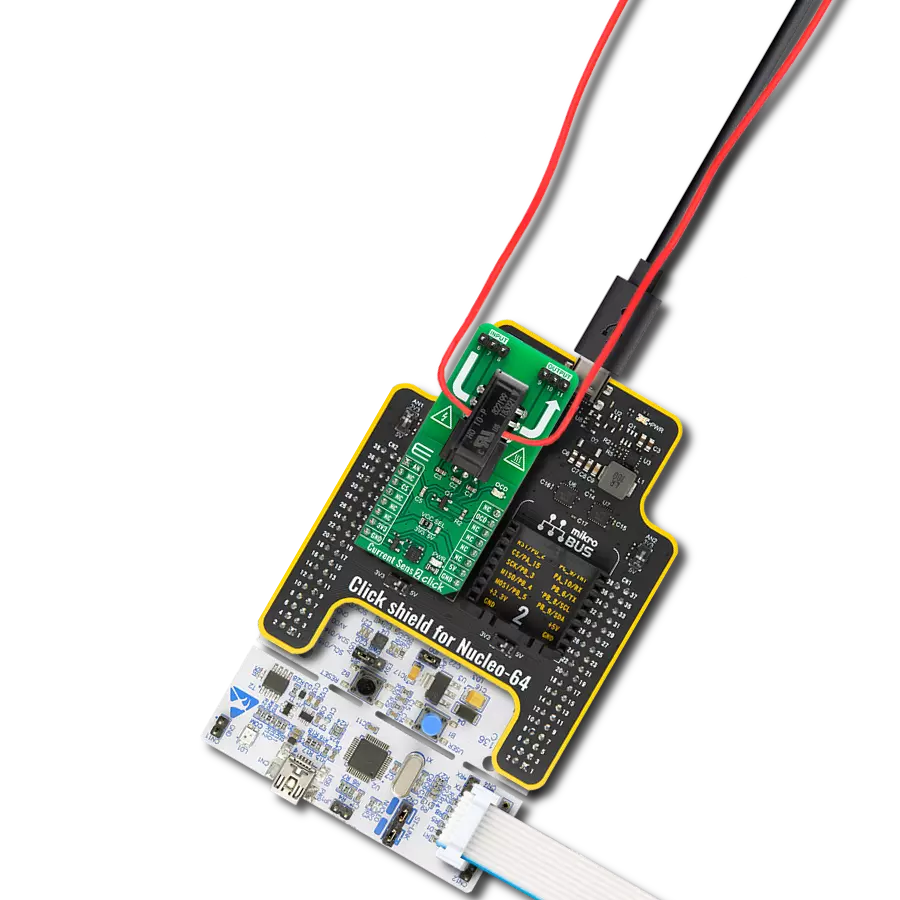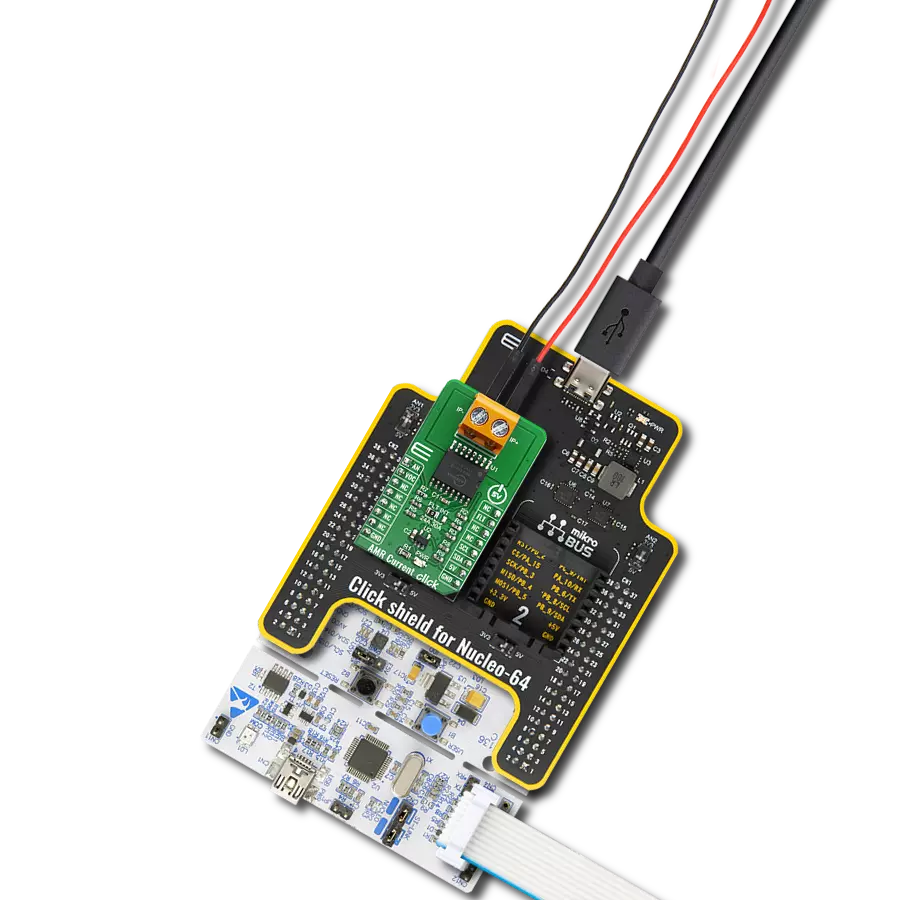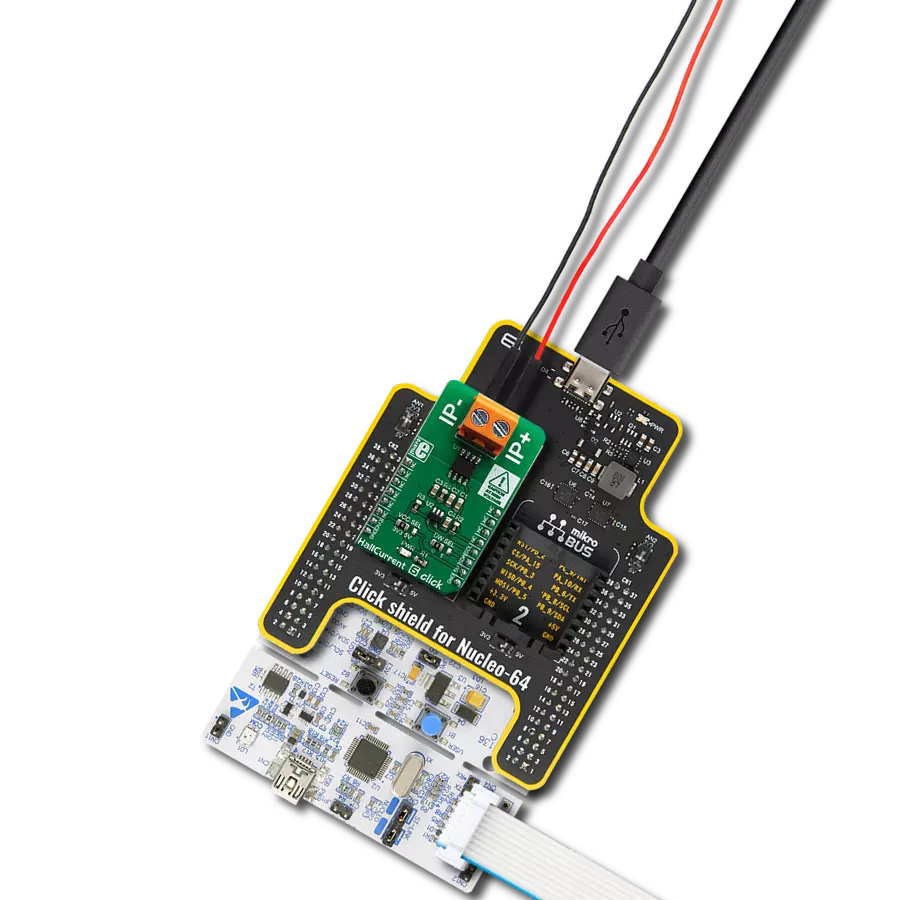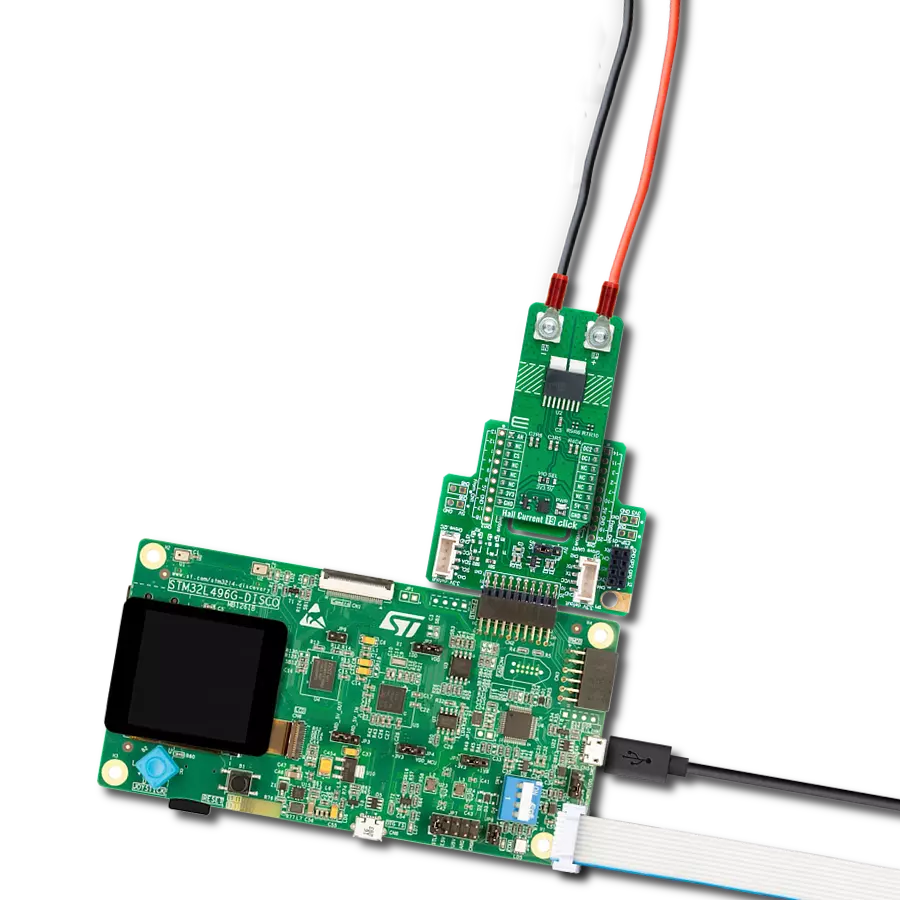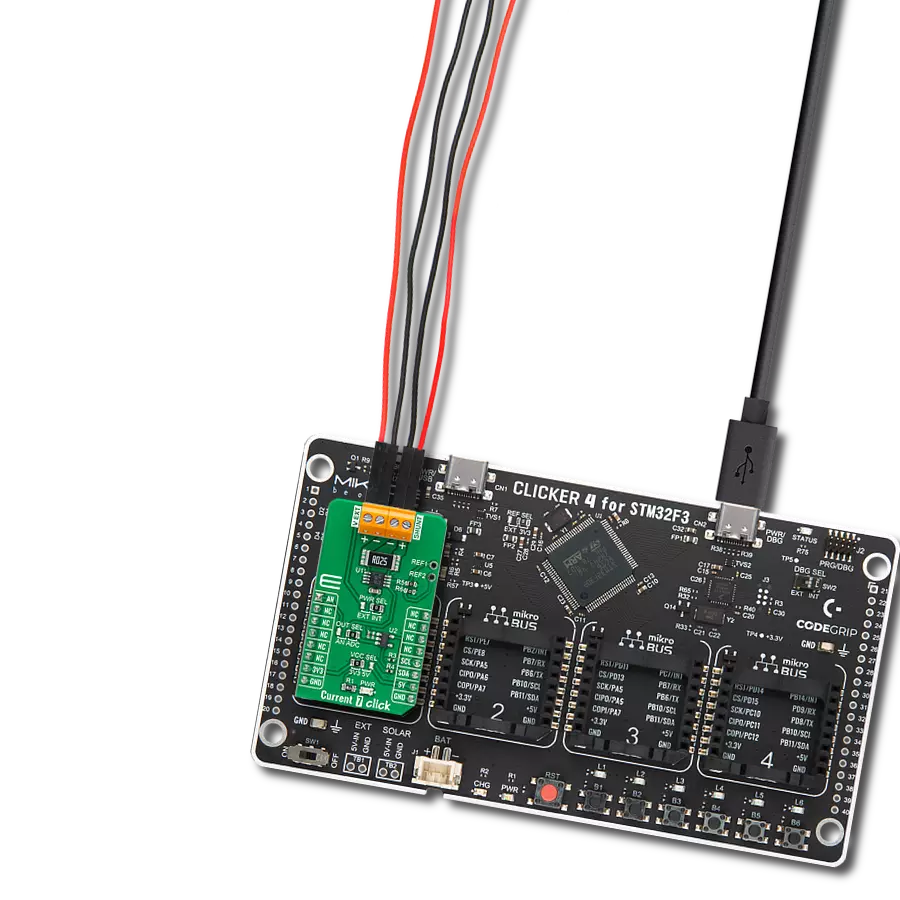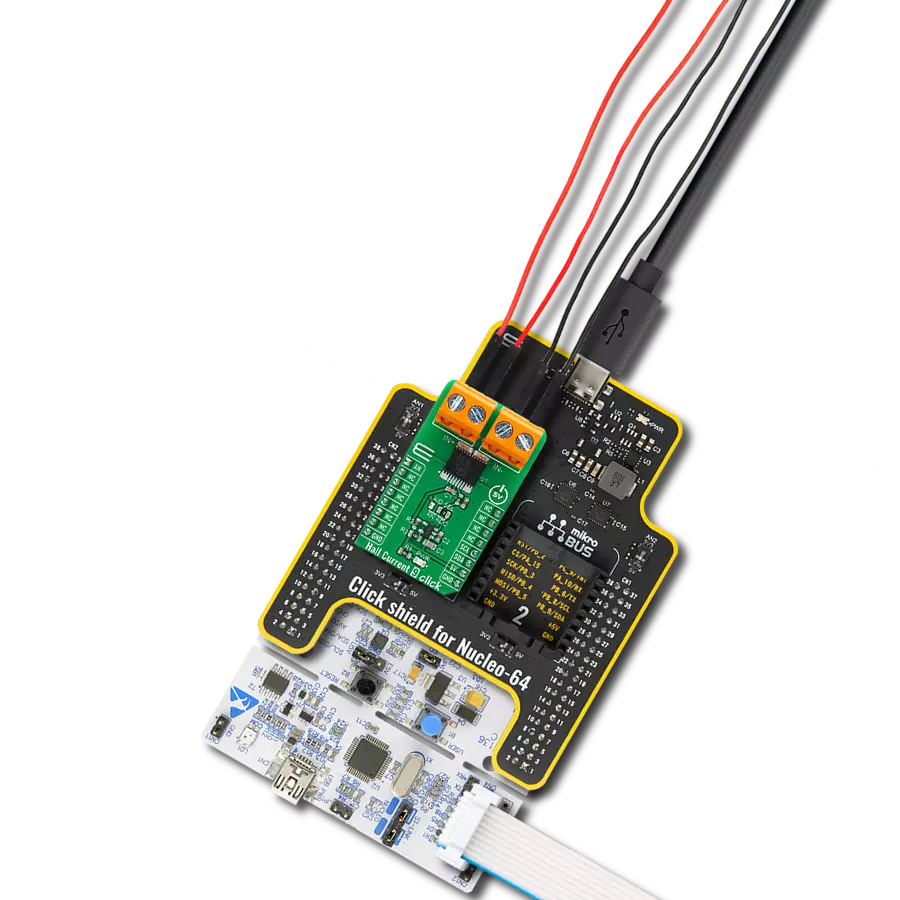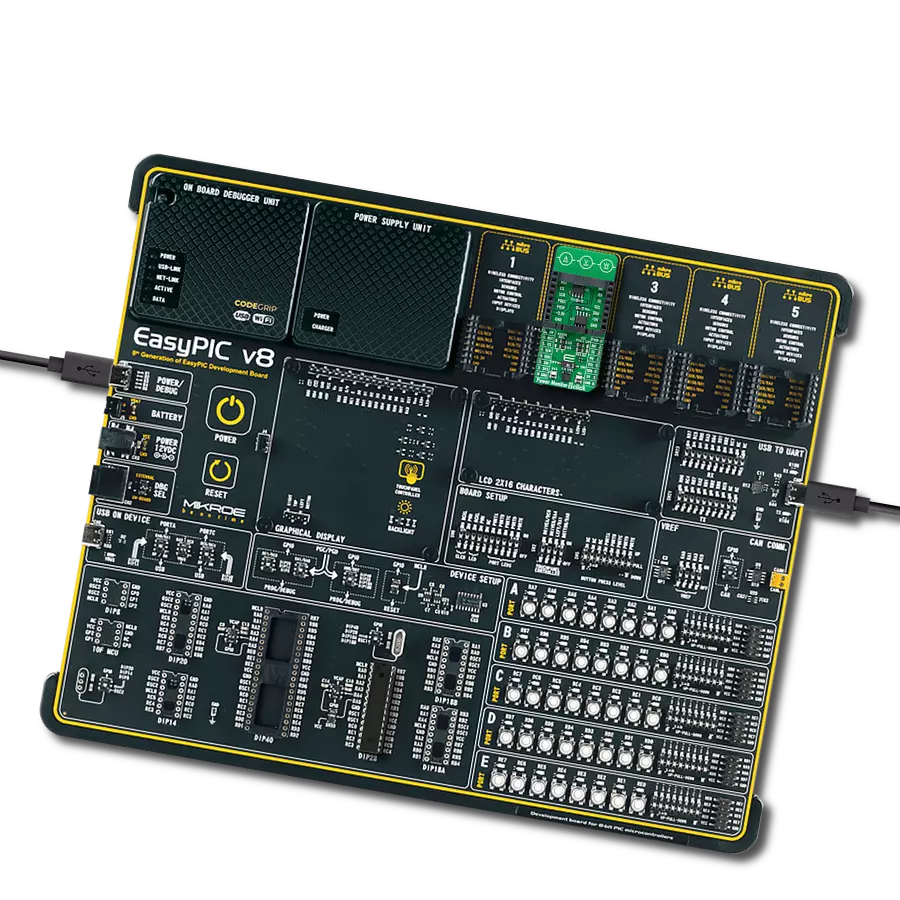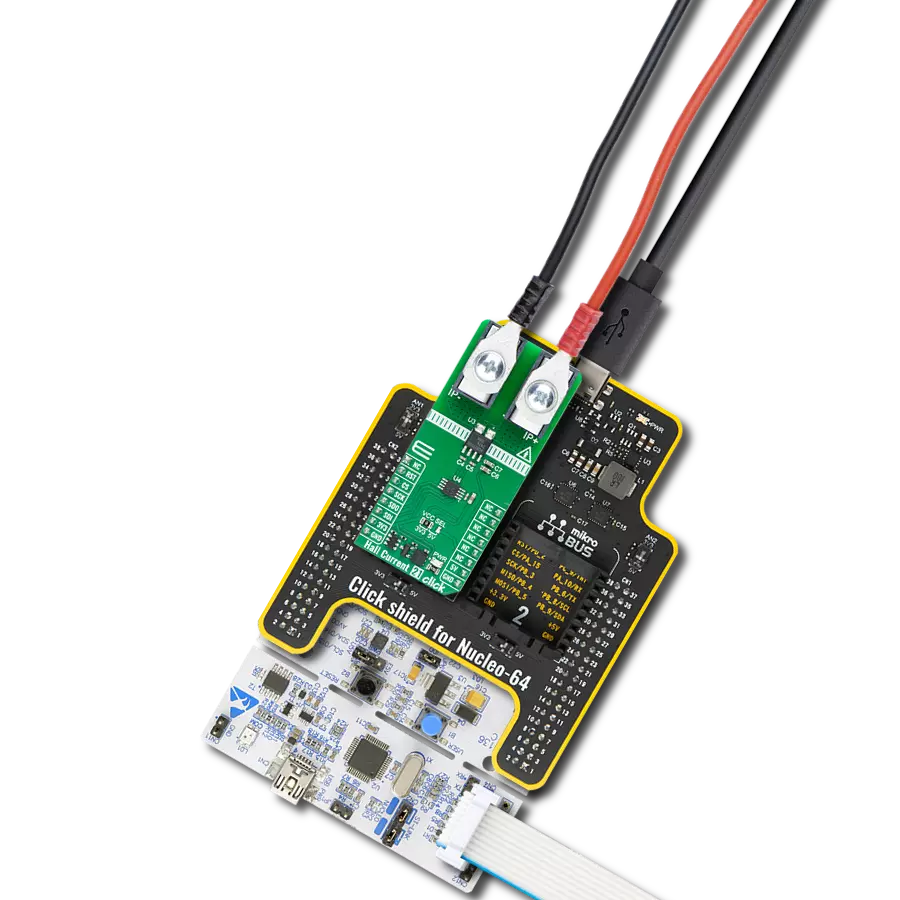Measure current with high isolation and wide bandwidth for fast, reliable monitoring ideal for power supplies, data centers, and solar converters
A
A
Hardware Overview
How does it work?
Hall Current 21 Click is based on the ACS37030, a DC to 5MHz bandwidth, a galvanically-isolated current sensor from Allegro Microsystems, designed to provide precise current measurements across a wide frequency range, ideal for applications requiring fast and accurate current monitoring. The ACS37030 offers bidirectional current sensing, with a range of ±65A and a sensitivity of 20.3mV/A, allowing for precise monitoring of both positive and negative currents. It is AEC-Q100 Grade 0 qualified, ensuring high reliability and robustness, even in harsh environments. Additionally, its wide operating bandwidth and low noise make it suitable for fast control loops and monitoring high-speed switching currents. This Click board™ is ideal for various applications, including power supplies for servers and data centers, solar DC-DC converters, and other high-performance power management systems that demand fast, accurate, and isolated
current sensing. The ACS37030 uses two distinct signal paths for current sensing: a Hall-effect element that captures DC and low-frequency currents and an inductive coil that measures high-frequency currents. Combining the outputs of both paths, this sensor achieves broad frequency coverage with minimal noise, ensuring reliable performance in various operating conditions. As the frequency increases, the coil's properties enhance the signal-to-noise ratio (SNR), further reducing noise at the output and ensuring clean and accurate measurements. The sensor's innovative design provides a high level of isolation. The magnetic coupling between the current flow in the conductor and the sensor elements ensures that the current is sensed without direct physical contact, allowing for an isolation rating of 3500 VRMS between the primary and secondary signal leads. This rating provides a working voltage of up to 840VRMS, making it suitable for applications
requiring high isolation, such as industrial and automotive environments. The ACS37030 outputs an analog signal that varies linearly with the bidirectional AC or DC primary current within the range specified. Then, it sends its analog output to the ADC122S101, a two-channel 12-bit A/D converter from Texas Instruments that uses a standard 4-Wire SPI serial interface to communicate with the host MCU. This ADC is based on a successive/approximation register architecture with an internal track-an-hold circuit and fully specified over a sample rate range of 500ksps to 1Msps. This Click board™ can operate with either 3.3V or 5V logic voltage levels selected via the VCC SEL jumper. This way, both 3.3V and 5V capable MCUs can use the communication lines properly. Also, this Click board™ comes equipped with a library containing easy-to-use functions and an example code that can be used as a reference for further development.

Features overview
Development board
PIC18F57Q43 Curiosity Nano evaluation kit is a cutting-edge hardware platform designed to evaluate microcontrollers within the PIC18-Q43 family. Central to its design is the inclusion of the powerful PIC18F57Q43 microcontroller (MCU), offering advanced functionalities and robust performance. Key features of this evaluation kit include a yellow user LED and a responsive
mechanical user switch, providing seamless interaction and testing. The provision for a 32.768kHz crystal footprint ensures precision timing capabilities. With an onboard debugger boasting a green power and status LED, programming and debugging become intuitive and efficient. Further enhancing its utility is the Virtual serial port (CDC) and a debug GPIO channel (DGI
GPIO), offering extensive connectivity options. Powered via USB, this kit boasts an adjustable target voltage feature facilitated by the MIC5353 LDO regulator, ensuring stable operation with an output voltage ranging from 1.8V to 5.1V, with a maximum output current of 500mA, subject to ambient temperature and voltage constraints.
Microcontroller Overview
MCU Card / MCU
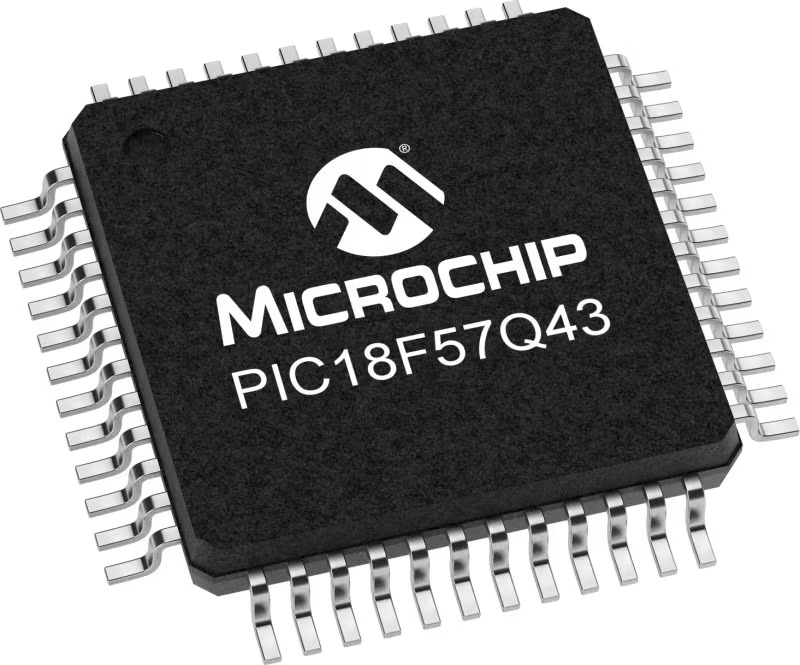
Architecture
PIC
MCU Memory (KB)
128
Silicon Vendor
Microchip
Pin count
48
RAM (Bytes)
8196
You complete me!
Accessories
Curiosity Nano Base for Click boards is a versatile hardware extension platform created to streamline the integration between Curiosity Nano kits and extension boards, tailored explicitly for the mikroBUS™-standardized Click boards and Xplained Pro extension boards. This innovative base board (shield) offers seamless connectivity and expansion possibilities, simplifying experimentation and development. Key features include USB power compatibility from the Curiosity Nano kit, alongside an alternative external power input option for enhanced flexibility. The onboard Li-Ion/LiPo charger and management circuit ensure smooth operation for battery-powered applications, simplifying usage and management. Moreover, the base incorporates a fixed 3.3V PSU dedicated to target and mikroBUS™ power rails, alongside a fixed 5.0V boost converter catering to 5V power rails of mikroBUS™ sockets, providing stable power delivery for various connected devices.
Used MCU Pins
mikroBUS™ mapper
Take a closer look
Click board™ Schematic

Step by step
Project assembly
Track your results in real time
Application Output
1. Application Output - In Debug mode, the 'Application Output' window enables real-time data monitoring, offering direct insight into execution results. Ensure proper data display by configuring the environment correctly using the provided tutorial.

2. UART Terminal - Use the UART Terminal to monitor data transmission via a USB to UART converter, allowing direct communication between the Click board™ and your development system. Configure the baud rate and other serial settings according to your project's requirements to ensure proper functionality. For step-by-step setup instructions, refer to the provided tutorial.

3. Plot Output - The Plot feature offers a powerful way to visualize real-time sensor data, enabling trend analysis, debugging, and comparison of multiple data points. To set it up correctly, follow the provided tutorial, which includes a step-by-step example of using the Plot feature to display Click board™ readings. To use the Plot feature in your code, use the function: plot(*insert_graph_name*, variable_name);. This is a general format, and it is up to the user to replace 'insert_graph_name' with the actual graph name and 'variable_name' with the parameter to be displayed.

Software Support
Library Description
This library contains API for Hall Current 21 Click driver.
Key functions:
hallcurrent21_read_voltage_avg- This function reads a desired number of ADC samples and calculates the average voltage level of the selected input channel.hallcurrent21_calib_resolution- This function reads the sensor voltage reference and calibrates the data resolution at a known load current.hallcurrent21_read_current- This function reads the input current level [A].
Open Source
Code example
The complete application code and a ready-to-use project are available through the NECTO Studio Package Manager for direct installation in the NECTO Studio. The application code can also be found on the MIKROE GitHub account.
/*!
* @file main.c
* @brief Hall Current 21 Click example
*
* # Description
* This example demonstrates the use of Hall Current 21 Click board by reading and
* displaying the input current measurements.
*
* The demo application is composed of two sections :
*
* ## Application Init
* Initializes the driver and calibrates the data resolution at 3A load current.
*
* ## Application Task
* Reads the input current measurements and displays the results on the USB UART
* approximately once per second.
*
* @note
* The measurement range is approximately: +/- 65A.
*
* @author Stefan Filipovic
*
*/
#include "board.h"
#include "log.h"
#include "hallcurrent21.h"
// Load current [A] used for the data resolution calibration process.
#define HALLCURRENT21_CALIBRATING_CURRENT 3.0f
static hallcurrent21_t hallcurrent21;
static log_t logger;
void application_init ( void )
{
log_cfg_t log_cfg; /**< Logger config object. */
hallcurrent21_cfg_t hallcurrent21_cfg; /**< Click config object. */
/**
* Logger initialization.
* Default baud rate: 115200
* Default log level: LOG_LEVEL_DEBUG
* @note If USB_UART_RX and USB_UART_TX
* are defined as HAL_PIN_NC, you will
* need to define them manually for log to work.
* See @b LOG_MAP_USB_UART macro definition for detailed explanation.
*/
LOG_MAP_USB_UART( log_cfg );
log_init( &logger, &log_cfg );
log_info( &logger, " Application Init " );
// Click initialization.
hallcurrent21_cfg_setup( &hallcurrent21_cfg );
HALLCURRENT21_MAP_MIKROBUS( hallcurrent21_cfg, MIKROBUS_1 );
if ( SPI_MASTER_ERROR == hallcurrent21_init( &hallcurrent21, &hallcurrent21_cfg ) )
{
log_error( &logger, " Communication init." );
for ( ; ; );
}
log_printf( &logger, " Calibrating data resolution in 5 seconds...\r\n" );
log_printf( &logger, " Keep the load current set at %.1fA during the calibration process.\r\n",
HALLCURRENT21_CALIBRATING_CURRENT );
for ( uint8_t cnt = 5; cnt > 0; cnt-- )
{
log_printf( &logger, " %u\r\n", ( uint16_t ) cnt );
Delay_ms ( 1000 );
}
if ( HALLCURRENT21_ERROR == hallcurrent21_calib_resolution ( &hallcurrent21,
HALLCURRENT21_CALIBRATING_CURRENT ) )
{
log_error( &logger, " Calibrate resolution." );
for ( ; ; );
}
log_printf( &logger, " Data resolution calibration DONE.\r\n" );
log_info( &logger, " Application Task " );
}
void application_task ( void )
{
float current = 0;
if ( HALLCURRENT21_OK == hallcurrent21_read_current ( &hallcurrent21, ¤t ) )
{
log_printf( &logger, " Current : %.1f A\r\n\n", current );
Delay_ms ( 1000 );
}
}
int main ( void )
{
/* Do not remove this line or clock might not be set correctly. */
#ifdef PREINIT_SUPPORTED
preinit();
#endif
application_init( );
for ( ; ; )
{
application_task( );
}
return 0;
}
// ------------------------------------------------------------------------ END
Additional Support
Resources
Category:Current sensor
